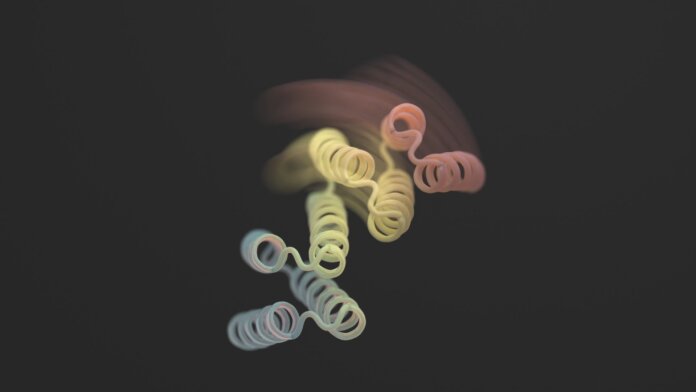Researchers in David Baker’s lab at the University of Washington have leveraged machine learning to create proteins that toggle between two different shapes in response to biological triggers. Their approach, presented in Science, overcomes a limiting challenge in computational protein design and broadens the potential functionality of designed proteins. Study co-author Banumathi Sankaran, a research scientist in the Molecular Biophysics and Bioimaging Division, used the Advanced Light Source (ALS) beamlines in the Berkeley Center for Structural Biology (BCSB) to validate their results with X-ray crystallography data.
Found widely in nature, two-state proteins can function like switches, translating biochemical information (such as the presence of a certain molecule) into structural changes. This makes them critical components of essential cellular processes, including signaling, sensing, and mechanical motion. But designing such proteins is not easy: Optimizing for multiple structural states that are distinct and stable enough to function puts additional constraints on an already tough problem.
That’s where the research team tapped into the iterative power of machine learning to predict the structure of a hinge-like protein that could satisfy these narrow design criteria. Working from previously designed hinge proteins as templates, the researchers were able to generate novel hinge proteins that successfully demonstrated a conformational change—or a large shift in structure upon binding a specific target peptide. X-ray crystallography data, collected by Sankaran as part of the Collaborative Crystallography program, helped characterize these conformational structures as two distinct, well-defined states, and demonstrate that the assembled proteins were nearly identical to their designs on an atomic scale.
The ability to design such two-state systems could help the world of computational protein design move beyond static structures and into building more complex assemblies with advanced functions and applications.




